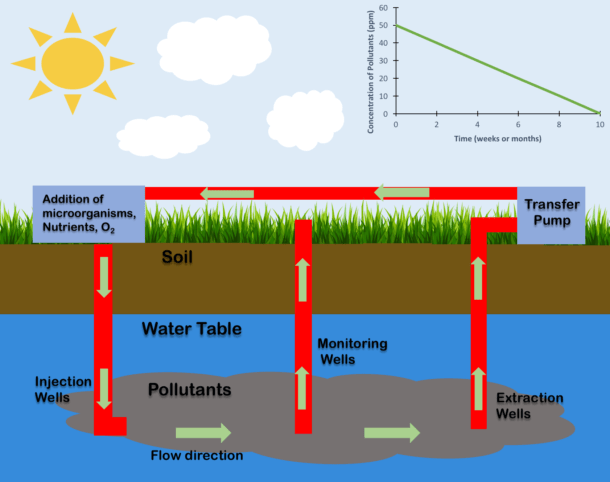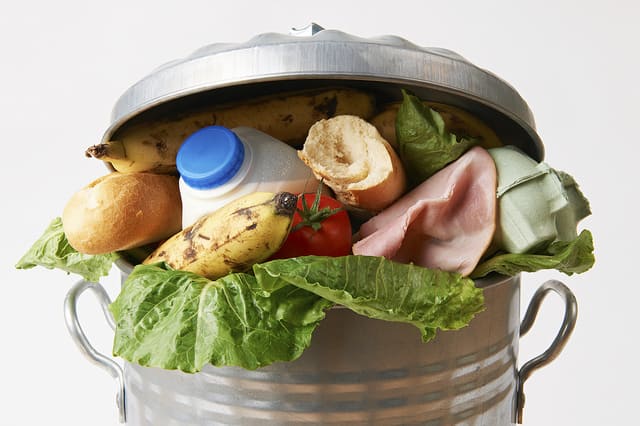Bioremediation: Types, Uses and Techniques

Bioremediation is the use of micro-organisms, plants or fungi to enhance the conversion of harmful / toxic environmental wastes and contaminants into harmless / non-toxic substances. This cheap, safe and environment-friendly method of treating environmental wastes and contaminants was invented by George M. Robinson, a petroleum engineer, while he served as an assistant county petroleum engineer for Santa Maria, California.
The process of bioremediation gained public acceptance in the 1960s after several experiments had been conducted with dirty jars and abandoned oil sumps of the Cat Canyon Oil field. Several successes were recorded in the 1970s using the bioremediation process pioneered by George M. Robinson.
Some of the successes include:
- Proper cleaning of the fuel holding tanks on the RMS Queen Mary during its conversion to a Long Beach tourist attraction
- Effective control of the odour and runoff at Buellton wild Animal Park.
Bioremediation is the process of treating environmental wastes and contaminants using naturally occurring micro-organisms (i.e fungi, yeast or bacteria) to convert harmful / toxic substances into less / non-toxic substances. The micro-organisms used in bioremediation, rely on the environmental wastes or contaminants as their source of energy / food. Thus, by feeding on the environmental wastes or contaminants, they reduce the load of wastes and contaminants in the environment.
However, as the micro-organisms feed on the environmental wastes and contaminants, the number of micro-organisms available for bio-remediation decreases continually. This is because, as the micro-organisms feed, they reduce the amount of food (environmental wastes and contaminants) necessary to support the initial population of bio- remediating micro-organisms.
Interestingly, the dead micro-organisms or the small population of bio-remediating micro-organisms (in the absence of food) do not pose any risk of contamination to the environment.
Furthermore, micro-organisms used in bioremediation can be grouped into two main classes.
- Indigenous microorganisms: This refers to micro-organisms that are already present at the site to be bio-remediated. However, to stimulate the growth of this group of micro-organisms, adequate levels of oxygen, proper soil temperature and sufficient nutrient necessary for the growth of the micro-organisms must be supplied.
- Exogenous micro-organisms: Micro-organisms belonging to this category are those which were introduced into the soil to be bio-remediated. This occurs as a result of the absence of the required biological activity (indigenous micro-organisms) needed to degrade the contaminant in the soil of a given area to be bio-remediated.
Apart from supplying the required nutrient and oxygen necessary for the survival of exogenous micro-organisms, the soil conditions at the new site may need some adjustments to ensure that the exogenous microorganisms thrives in the new environment.
However, it must be noted that, not all waste types and site conditions can be compared. Each site to be bioremediated must be individually tested and investigated to optimize bioremediation outcome. Engineering and scientific judgment must be engaged to determine the suitability and appropriateness of bioremediation techniques for a site
The specific bioremediation technology employed is determined by several factors. These factors include:
– The type of microorganisms present,
– The site conditions,
– The quantity and toxicity of contaminant chemicals
Different microorganisms degrade different types of compounds and survive under different conditions (aerobic or anaerobic conditions)
Types of Bioremediation
Microbial bioremediation
This type of bioremediation is one which relies on the enzymatic activity of microbes, for the conversion of harmful/toxic wastes or contaminants into harmless/non-toxic substances. It is achieved through the interaction of microbes with toxic wastes or contaminants, which leads to immobilization, compartmentalization and eventual concentration of pollutants.
Phytoremediation
It is a cheap, solar energy driven clean-up technique. It involves the use of green plants for in-place degradation, removal or containment of wastes or contaminants in sludge, soil, ground water or sediments. Poplar trees are most used in carrying out this technique of bioremediation. However, if contaminant levels are too high, plants used on such sites may die. This technique requires a large surface area of land for effective bioremediation.
Mycoremediation
In this technique, fungi are used in bioremediation. Mushrooms are commonly used in carrying out this technique of bioremediation. Thus, this technique relies on the efficiency of the enzymes produced by mushrooms for the degradation of various substrates (environmental wastes and contaminants).
However, apart from the enzymatic mode of bioremediation in fungi, biosorption could also occur. Biosorption is a process in which pollutants are absorbed by mushrooms into their mycelium, rendering such mushrooms inedible. The following fungi, Trichoderma, Aspergillus and Pleurotus have been found to be effective in the removal of: Cadmium, Nickel, Lead, Chromium, Mercury, Arsenic, Boron, Iron and Zinc in waste water, on land and in Marine environment.
Techniques of Bioremediation
In-situ technique
In-situ technique does not require excavation of the contaminated soils, thus, it is a cheaper technique of bioremediation in contrast to ex-situ technique. The contaminated soil is treated in-place using a suitably chosen type of bioremediation. Although, this technique is cheaper and creates lesser amount of dust in comparison with ex-situ technique, it may be slower and difficult to manage. It is most effective on sites with permeable soil.
In aerobic in-situ technique, nutrient and oxygen is supplied to the micro-organisms involved in bioremediation in the soil. The following techniques are employed in achieving adequate supplies of nutrient and oxygen:
- Bioventing
- Injection of hydrogen peroxide
Ex-situ technique
Ex-situ bioremediation processes involve an excavation of contaminated soil or pumping of groundwater before and sometimes, after the actual bioremediation treatment. This technique is usually faster, easier to control and used to treat a wider range soil types and contaminants than in situ techniques. Ex-situ techniques include
- Slurry-phase bioremediation (Very useful when rapid remediation is of high priority)
- Solid-phase bioremediation (Relatively easy to operate and maintain, requires more space, but, clean-ups take more time than slurry-phase bioremediation technology)
Uses of Bioremediation
The following are some uses of bioremediation:
- Treatment of oil spillage: Oil-spillage is a common occurrence in oil-rich countries. Thus, oil spillage is usually associated with environmental mess and death of water life forms e.g Fishes. Thus, oil-eating bacteria are introduced into the affected streams, rivers or oceans to cause a depletion of the spilled oil in water bodies. Dispersants are often added to aid this process.
- Treatment of rivers, streams and estuaries: Bioremediation is used for the removal of contaminants such as: fertilizers, pesticides etc from these bodies of water
- Sewage (waste water) treatment: Sewage, often a mixture of chemicals, wastes and other contaminants, must be treated in recycling processes. Bioremediation processes offer the most effective and cheapest means.
- Compost bioremediation: Decontamination of contaminated of soil samples can be achieved by mixing such samples with compost. The contaminants are removed by the micro-organisms present in the compost. A very effective bioremediation method.
- Bioaugmentation: Bioremediation is very important in the development of super-decomposers. The development of super-decomposers facilitates the quick eradication of environmental wastes and contaminants. This is often achieved through genetic engineering manipulations on natural decomposers to produce super-decomposers.
Sources:
- What is bioremediation? Retrieved from hawaii.edu/abrp/biordef.html
- World Journal of Microbiology and Biotechnology. Christopher Chibueze Azubuike, Chioma Blaise Chikere and Gideon Chijioke Opokwashii. Bioremediation techniques – Classification based on site of application: Principles, advantages, limitations and prospects. (2016, September, 16). Retrieved from https://www.ncbi.nlm.nih.gov/pmc/articles/PMC5026719/
- US Microbics. Retrieved from https://en.m.wikipedia.org/wiki/US_Microbics (Accessed on 2019, February, 17)






